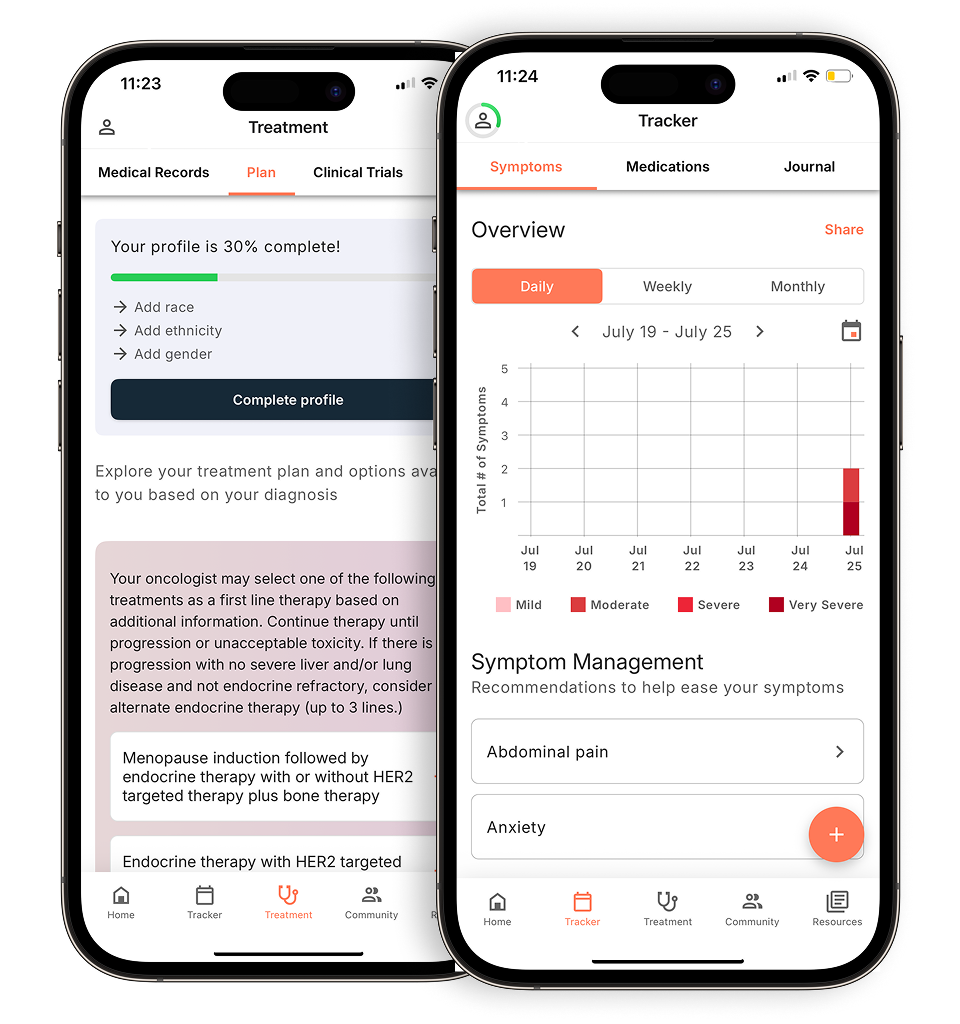Robotic Prostate Surgery for Cancer Explained
If you’ve been diagnosed with early-stage prostate cancer, your care team might recommend a surgical procedure called a robotic prostatectomy. For cancer that’s in its earlier stages and hasn’t spread to surrounding tissue, this sophisticated, minimally invasive procedure is often suggested due to the surgeon’s ability to operate on your prostate with precise control.
If your care team recommends this approach as your treatment, make sure to ask any questions about the procedure, risks, and benefits based on your health history and cancer stage.
Following is an initial summary of what you can expect:
What is a robotic prostatectomy?
During the procedure, a surgeon will make approximately six keyhole size incisions in your abdomen, and then insert a robot-controlled camera through the incisions to get a visual of your prostate.
Evidence-based guidance powered by NCCN Guidelines®
Personalized treatment plans shaped by the latest oncology standards—tailored to your diagnosis.
Get started
View your personalized treatment plan in the Outcomes4Me app
Use your diagnosis to unlock personalized NCCN Guidelines®-aligned recommendations.
Continue in app
Using a control panel, the surgeon will guide the camera as it removes your prostate and surrounding tissue through one of the incisions. The surgery occurs without the surgeon needing to put their hands in your body, it’s all controlled from the console and is incredibly precise.
You’ll be under general anesthesia and asleep through the procedure, and be given a catheter and potentially a wound drain before you leave the operating room for recovery.
What are the benefits of a robotic prostatectomy?
A robotic prostatectomy, when compared to open surgery, can result in less blood loss, less pain, shorter time in the hospital, and a faster recovery. It’s important to note that, when going through any procedure, the benefits are dependent on your overall health.
Are there risks and side effects associated with a robotic prostatectomy?
Although robotic prostatectomy is a safe procedure, it has some level of risk that’s associated with all surgeries. Potential risks include bleeding, infection at the surgical site, and damage to surrounding tissue.
Side effects for both robotic prostatectomy and open surgical approaches include the inability to control urine (urine incontinence) and erectile dysfunction. Urine incontinence is likely to improve over time and surgeons will utilize nerve-sparing techniques during the procedure if the cancer hasn’t spread.
What’s recovery like after a robotic prostatectomy?
While the surgery will require an overnight stay in the hospital, you should be able to go home the day after your procedure. You will have a catheter attached to your urethra that will stay in place for at least 7 days.
You’ll likely have frequent urination and may potentially have spasms in your bladder that feel like cramps. Blood in your urine is common after surgery and you may experience some face swelling for up to 48 hours. Talk to your doctor about recommendations for managing any side effects from your catheter, including wearing a pad in your underwear in case of accidents.
Overall recovery can be as little as 2 to 3 weeks. While you’ll be able to walk following your procedure, you should wait to enjoy light exercise and drive after 2 weeks. Don’t perform sexual activity until the catheter has been removed.
Talk to your care team before making any decisions, as they might recommend an alternate treatment path, which could include a different type of surgery, radiation, or hormone therapy.
If you have additional questions about a possible recurrence of prostate cancer and you’d like to speak with someone, you can connect with an Outcomes4Me oncology nurse practitioner at no charge through the Outcomes4Me app, using the “Ask Outcomes4Me” button.
Related Topics
- Understanding Prostate Cancer Biomarker Testing
- Therapy vs. Surgery for Prostate Cancer
- Metastatic Castration-Resistant Prostate Cancer Treatment Options
- How Does Hormone Therapy Work for Prostate Cancer?
- How Precision Medicine Can Help With Prostate Cancer
- Advances in Immunotherapy for Prostate Cancer Treatment
Personalized support for real care decisions
Understand your diagnosis, explore clinical trials, and track symptoms--all in one place.
Get started
Compare treatments, prepare for appointments, and track side effects—all in the app
Built for your diagnosis, Outcomes4Me gives you the tools to make confident, informed decisions—right when you need them.
Continue in app






